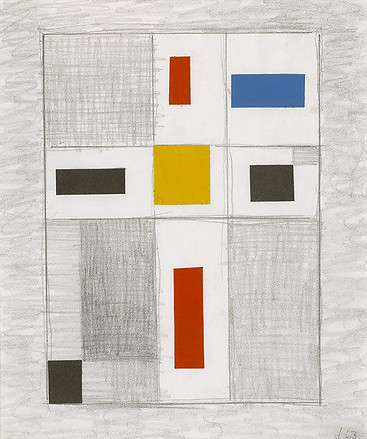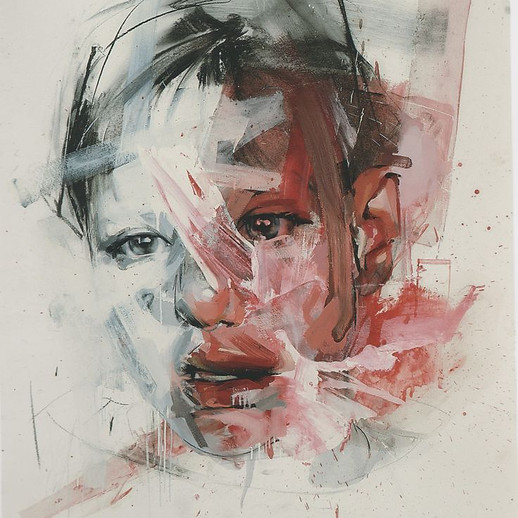
NT
BREAKING BOUNDARIES RESEARCH
There are many artists that have acted as inspiration for my project - 'Breaking Boundaries'. Each of these artists are painters who have experimented with new techniques and created interesting and expressive pieces. I wish to use similar ideas within my project to create effective work and explore different ways of producing art.
MARILYN
MINTER
Mark Chadwick


Mark Chadwick's work is some of my favourite. He is a skilled abstract fluid painter and uses modern techniques to produce vibrant, complex paintings. Usually, they are made from fluid acrylic or ink, mixed with mediums and manipulated by Chadwick, creating interesting shapes and lines. Some of these techniques include, spinning, shaking, pouring and heating. In each piece, the colour story is carefully selected and may include contrasting or complimentary colours. Chadwick's work is eye catching yet includes a mass of detail. His paintings have no specific meaning but rather Chadwick focuses on process and authority in his creations. 'The paintings are built up of many layers of paint, each creating it's own flowing abstract surface left open to interpretation by the viewer'. Chadwick relies on chance encounters and gravity as although, he may plan the colours and technique, it is often up to the materials themselves how they will end up reacting.
Fluid painting is something I have always wanted to try because I admire the organic nature of it and I have seen many fascinating results from artists such as Chadwick. This work reminds me a lot of Abstract Expressionism action painters but almost requires less control which excites me greatly. This is the direction I wish to take to create a piece that is not only something that would catch the attention of the audience but also tends to break the rules of a conventional fine artist.
Jackson Pollock

Jackson Pollock is heavily influential in my project. I wanted to take on some of the concepts of Abstract Expressionism which was an Art movement in America that was made famous by artists such as Pollock. As an action painter, Pollock's drip pieces were very expressive and emotional and carried a particular importance within the movement. Pollock would often use his whole body to drip, throw and pour the paint onto a large scale canvas and trusted the material to create a piece that was ultimately an expressive, uncontrolled representation of Pollock's unconscious mind. These pieces often included other materials such as sand or glass which would alter the piece and form new textures and outcomes. They were also 'limitless' which meant that the piece was not confined to the four edges of the canvas and often dripped off the edge. This was a new concept at the time as although abstract paintings often had this idea, the revolutionary style of painting and the motion of the paint within the piece was never seen before and many critics raved about Pollock's work for this reason. These aspects are what I want to consider for my piece. I am fond of the idea of letting the paint create a piece for me with little control and also wish to express the idea of not letting a frame or canvas confine an idea. Further research on Pollock and Abstract Expressionism can be found in the essay and presentation below.


Presentation
Essay
Franz Kline



Similarly to Jackson Pollock, Franz Kline was an Abstract Expressionist Action Painter in New York in the 40s and 50s. Along with Pollock, he was in a group of elite Abstract Expressionists named the New York School. His large scale paintings were conducted using large strokes of paint on canvas and were often black and white. His techniques made him rather distinct amongst the painters of that time. His paintings were supposed to be structured and powerful and were vastly different from his realism works which he painted in his early career. As a gestural painter, Kline created a relationship between horizontal and vertical strokes that although predominantly abstract, revoked the viewer of his work to compare it to figures such as cityscapes or an open window such as in Four Square (1956). I am taking inspiration from the power of the brush in Kline's work. I think this will be a good way to use texture and strength of colour in my piece and wish to paint expressively in such a way as Kline would have.
Burgoyne Diller

Unlike many of the artists I have explored, Burgoyne Diller does not use gestural or expressive marks in their work. An artist under influence of the De Stijl movement, Diller used abstract geometrical shapes, grids, lines and primary colour in his pieces. He was a pioneer of American Modernism in the 1940s and 50s and worked with not only painting but drawing and sculpture too. His work was similar to artists such as Piet Mondrian but is seemingly more minimalist. Diller saw abstraction as “the ideal realm of harmony, stability and order in which every form and spatial interval could be controlled and measured.” I think a good contrast to the free flowing lines and gestures in my piece would be geometric shapes and clean lines. I may try layering the two to see what effect it would have or use shaped canvases or even grids in conjunction with other aspects of the piece.
I would also like to experiment with a sculptural aspect as Diller had.
Jenny Saville
Jenny Saville is different to the other artists that have influenced my work. Rather than being an abstract artist, Saville focuses on figures, mostly people, in her works. This is not the reason I have chosen to research her however, but rather because of the way she paints. I would like to include something a little more figurative in my piece and I am inspired by the painting techniques of Saville's portraits which is similar to the likes of Lucian Freud. As a contemporary British painter, Saville has produced many large scale works in which she paints women with distinct brush strokes and gestural marks to mimic skin texture and bodily mass. This is similar to Franz Kline's pieces except it easier to determine what the painting is of. I like the way that the lack of blending and mark making provides texture and emotion to her pieces. If I was to experiment with painting objects as part of this project I would like to use this style of painting or maybe even layer similar marks on with a palette knife for added texture and rigidity.



Jason Cianelli

Jason Cianelli is a digital artist who has a series of Abstract energy paintings. Although similar to the works of Mark , Cianelli has more control over the painting. Starting from a drawing and acrylic paint drips he overlays the prints with digital editing to capture a physical representation of energy. The artist draws inspiration from colours and forms found in the natural world and intensifies them to create something sublime and spectacular, that would be difficult to produce with just traditional mediums. Large scale prints are made of Cianelli's work.

I want to experiment with this level of detail and sublime without using a digital aspect and just sticking to the traditional mediums such as paint and ink. I am very inspired by Jason Cianelli's work and am very fond of his work. I also like the idea of capturing an energy within a piece and will play with colour and materials to try and recreate a similar outcome.
Damien Hirst


Damien Hirst is a renowned British artist and art collector. In 1992 he began experimenting with Spin Paintings and in 1994-5 he produced a series of them. Hirst said that 'Movement implies life' and the movement in his spin paintings is clear. By dripping paint onto a spinning canvas, the paint will run of the edges and creates a wheel of colour. Most of the paintings in this series are vibrant and colourful with a few in monochrome colours or black and white. Each painting has a long name but all begin with 'Beautiful' and end in 'Painting'. They were described as messy and childish but from the viewers perspective, this is what I believe makes them so charming. I like the fact that you can see the speed of movement in the paintings and the colours merge together at some points. I would like to experiment with creating something in a childlike manner such as finger painting, throwing paint or making prints in my work. I believe this could be seen as child like yet very artistic and reminiscent and would pair well with other techniques I have explored through other artist research.
Michael Murphy


Michael Murphy is a political sculptor who is famous for his multi-layered sculptures. One of his most popular pieces is a sculpture of President Barack Obama, comprised of multiple layers each one a different skin tone. The fascinating part of Murphy’s sculptures is that they must be viewed from the front to form a whole image, yet they are equally as interesting from the side. Another of Murphy’s pieces which is a good example of this composition, is a sculpture that forms a crucifix from a front facing angle, but as you move around it, it reveals a multitude of images depicting themes such as science, marriage, money and firearms. This is a concept I find fascinating and I have taken direct inspiration from this artist whilst composing my exhibition piece. By hanging part of my piece and fragmenting the others it invites the audience to walk around the piece and observe it from all angles. This makes it interactive and offers much more than a single picture would which is why it ‘breaks boundaries’.